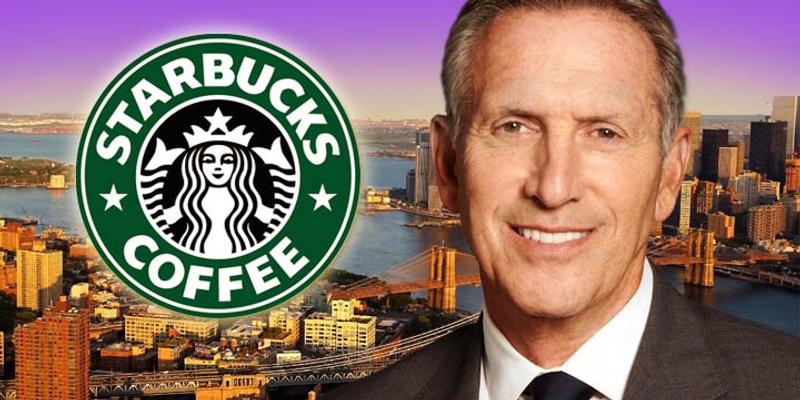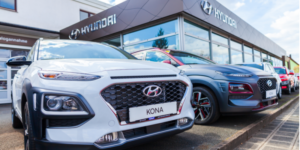Starbucks is not just a coffeehouse; it is a cultural phenomenon. From its humble beginnings as a single store in Seattle to its current status as a global juggernaut with over 35,000 stores worldwide, Starbucks has redefined how the world consumes coffee. But what makes Starbucks so popular? The story of its rise involves visionary leadership, innovative strategies, and an unwavering focus on customer experience. Let’s explore the journey of Starbucks through this comprehensive business case study.
The Origin Story

Jerry Baldwin, Gordon Bowker and Zev Siegl (left to right)
Starbucks began in 1971 as a small retailer selling high-quality coffee beans and equipment in Seattle’s Pike Place Market. Founded by Jerry Baldwin, Zev Siegl, and Gordon Bowker, the original Starbucks didn’t even serve brewed coffee. Instead, it focused on educating consumers about premium coffee, setting it apart in a market dominated by low-quality instant coffee.
The founders were inspired by European coffee culture, but the company’s growth was slow and steady, with just four stores by 1981. That year, Howard Schultz, then Vice President of a houseware company, visited one of the stores, tasted the coffee, and recognised its potential.
Howard Schultz and the Italian Inspiration
Howard Schultz’s vision would change the trajectory of Starbucks forever. A trip to Italy in 1983 proved transformative for him. Schultz observed the vibrant espresso bars of Milan, where baristas knew customers by name, and the cafes served as community hubs. Schultz envisioned creating a similar “third place” in America—a cozy space between home and work where people could relax, socialise, or work.

IL Giornale
Schultz’s idea was initially met with resistance from Starbucks’s founders, who wanted to stick to selling coffee beans and equipment. Frustrated but determined, Schultz left Starbucks in 1985 to start his own coffee shop, Il Giornale, which brought the Italian coffeehouse experience to the U.S.
Two years later, when the original Starbucks founders decided to sell their company, Schultz raised $3.8 million and acquired Starbucks, merging it with Il Giornale. This pivotal moment marked the beginning of Starbucks as we know it today.
Transforming Coffee Into an Experience
Howard Schultz’s trip to Italy in 1983 profoundly influenced his understanding of what coffee culture could be. Italian espresso bars were more than places to grab a quick shot of caffeine—they were social hubs.
This idea was foreign to America in the 1980s, where coffee consumption was often a solitary act involving instant coffee at home or bland diner brews. Schultz envisioned bringing the warmth, intimacy, and culture of Italian cafes to the U.S., creating spaces where coffee became an experience, not just a commodity.
- Redefining the Coffee Shop: To execute this vision, Schultz focused on every detail of the Starbucks customer journey, from the layout of the stores to the design of the cups. The goal was to create a consistent and immersive experience across all Starbucks locations.
- Expanding the Menu: Coffee and Beyond: Starbucks didn’t stop at just serving coffee. Recognising the diverse tastes of its growing customer base, the company expanded its menu to include teas, smoothies, and food items like pastries and sandwiches. Seasonal specials like the Pumpkin Spice Latte became cultural touchpoints, creating a sense of anticipation and excitement among loyal customers. The introduction of non-coffee beverages, such as Frappuccinos, also helped Starbucks attract a broader audience, including those who didn’t even drink coffee. This strategic diversification ensured Starbucks wasn’t just a coffee brand but a beverage and lifestyle brand.
- Building an Emotional Connection: Starbucks became more than a place to buy coffee; it became a brand people felt emotionally connected to. Schultz understood that customers didn’t just want a product—they wanted to feel special.
- Starbucks as a Lifestyle Brand: Schultz’s efforts went beyond creating a great coffeehouse. He aimed to position Starbucks as an aspirational lifestyle brand. Customers weren’t just buying coffee; they were buying into a brand that represented sophistication, community, and individuality. Carrying a Starbucks cup became a subtle status symbol, especially in the early days of its growth.
Aggressive Expansion
One of the key reasons behind Starbucks’s rapid growth was its aggressive expansion strategy. After Schultz became CEO in 1987, Starbucks grew from 17 stores to over 17,000 by 2008. Schultz envisioned Starbucks as a global brand and successfully entered international markets, starting with Japan in 1996.
Starbucks’s ability to adapt to local cultures played a significant role in its global success. In China, for instance, Starbucks introduced tea-based drinks to cater to local preferences while maintaining its signature coffee offerings. This localisation strategy helped Starbucks thrive in diverse markets.
Innovation in Product and Technology

Howard D. Schultz
Starbucks has always been ahead of the curve when it comes to innovation. While most companies in the food and beverage industry focus solely on expanding product offerings, Starbucks realised early on that embracing technology and redefining customer interaction was crucial to staying competitive. This forward-thinking approach revolutionised not just its product line but also the way customers interacted with the brand, solidifying its status as a global leader.
A Menu for Every Palate: Starbucks’s ability to innovate its menu has been a cornerstone of its success. While its initial focus was on high-quality coffee, the brand quickly realised the importance of catering to a diverse customer base. The menu expanded to include:
- Coffee Customisation: Starbucks introduced unprecedented levels of drink personalisation, allowing customers to choose everything from the type of milk to the number of espresso shots and sweetness level. This not only enhanced customer satisfaction but also created a sense of ownership and loyalty among customers.
- Non-Coffee Beverages: Recognising that not everyone is a coffee enthusiast, Starbucks introduced teas, smoothies, and cold beverages like the iconic Frappuccino, which alone became a billion-dollar product line.
- Food Offerings: Starbucks further diversified its menu by adding food items, including pastries, sandwiches, and salads, catering to customers looking for a quick breakfast or lunch.
Embracing the Digital Wave: Starbucks’s embrace of technology is where the company truly outshone its competitors. Its digital innovations not only streamlined operations but also enhanced the customer experience, creating a seamless integration between online and offline interactions.
- The Starbucks App: Launched in 2009, the Starbucks mobile app revolutionised the coffee experience. Customers could place orders, make payments, and even customise their drinks through the app, bypassing long lines at stores. The app became a digital wallet, making transactions smoother and faster.
- Starbucks Rewards: The company integrated its loyalty program into the app, offering incentives like free drinks and exclusive deals. By 2024, the Starbucks Rewards program boasted over 31 million active members in the U.S., generating significant repeat business. Members often preloaded funds onto their accounts, providing Starbucks with an interest-free cash flow that exceeded $1.5 billion globally.
- Mobile Order and Pay: Starbucks became one of the first major brands to implement mobile ordering on a large scale. This feature allowed customers to order ahead and pick up their drinks without waiting in line, enhancing convenience and reducing store congestion.
Data-Driven Personalisation: Starbucks’s use of technology extended beyond customer convenience; it delved into data analytics to personalise the customer experience. The company tracked purchasing habits through its app and rewards program, using this data to offer tailored recommendations and promotions. For example, a customer who frequently orders lattes might receive a discount on their next latte purchase or an offer to try a new latte variation. This personalised marketing fostered deeper engagement and loyalty.
Ethical Sourcing and Corporate Social Responsibility

Starbucks’s commitment to ethical sourcing and sustainability resonated with socially conscious consumers. The company pledged to ensure that 100% of its coffee is ethically sourced and invested in farmer support programs worldwide. Initiatives like reusable cups and community support programs further enhanced its reputation.
Overcoming Challenges
Starbucks faced its fair share of challenges. The 2008 financial crisis saw consumers cutting back on premium coffee, leading to a significant drop in Starbucks’s stock price. Rapid expansion had also diluted the brand’s essence, with many stores losing the distinct “Starbucks Experience.”
In response, Schultz returned as CEO in 2008 and implemented bold changes. He closed over 7,000 stores temporarily to retrain baristas, removed automated espresso machines to bring back the artistry of coffee-making, and focused on enhancing the customer experience. These efforts paid off, with Starbucks’s revenues rebounding significantly by 2009.
Strategic Real Estate and Financial Powerhouse: The Hidden Engines Behind Starbucks’s Success
While Starbucks is widely recognised for its coffee and customer experience, two lesser-known pillars of its success lie in its strategic real estate operations and its innovative financial model. These elements work behind the scenes, powering the company’s growth and creating a competitive edge that extends far beyond its beverages.
The “Frappuccino Effect”: Starbucks’s Real Estate Mastery

Starbucks’s success in real estate is not just about securing prime locations; it’s about transforming neighborhoods. This phenomenon, often dubbed the “Frappuccino Effect,” refers to how property values in areas near a Starbucks rise significantly after the store opens. For example:
- Property Value Impact: Between 1997 and 2014, the average American home’s value rose by 65%. In comparison, homes within a quarter-mile radius of a Starbucks experienced a staggering 96% increase in value.
This effect is no accident. Starbucks employs a dedicated team of analysts who leverage demographic and property data to select locations with high growth potential. The company often targets up-and-coming neighborhoods, benefiting from lower real estate costs and contributing to the area’s gentrification. As Starbucks moves in, it attracts other businesses, creating a thriving commercial ecosystem and boosting foot traffic.
Starbucks as a Financial Powerhouse
Starbucks’s innovation extends to its financial strategies, particularly through its Starbucks Rewards program and mobile app. These tools have effectively turned the company into a quasi-bank, providing significant financial advantages.
- The Starbucks Wallet: Customers can preload money onto their Starbucks app accounts, earning rewards and enjoying seamless transactions. As of 2024, this system has amassed over $1.5 billion in customer funds sitting in prepaid accounts—a figure that surpasses the reserves of many U.S. banks.
- Interest-Free Loans: Unlike traditional banks, Starbucks is not required to hold cash reserves for withdrawals, as the funds in its app can only be used for Starbucks purchases. This provides Starbucks with an interest-free loan that it reinvests into expansion, product development, and operational improvements.
The story of Starbucks is a masterclass in visionary leadership, brand building, and innovation. By transforming coffee into an experience and continuously adapting to consumer trends, Starbucks has created a global empire that is as much about community and culture as it is about coffee. Its journey from a small coffee bean retailer to a cultural icon offers invaluable lessons for businesses across industries. Starbucks’s success is proof that with the right strategy, even a cup of coffee can change the world.









![Read more about the article [Funding alert] Sales engagement platform Vymo raises $22M in Series C led by Bertelsmann India Investments](https://blog.digitalsevaa.com/wp-content/uploads/2022/02/V-05-1600852077699-300x150.png)
